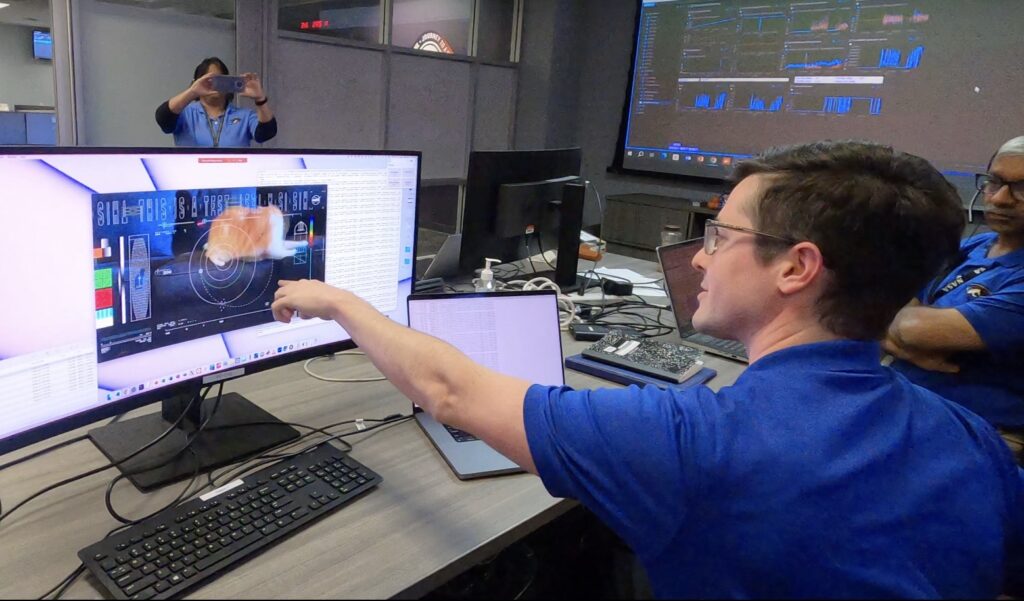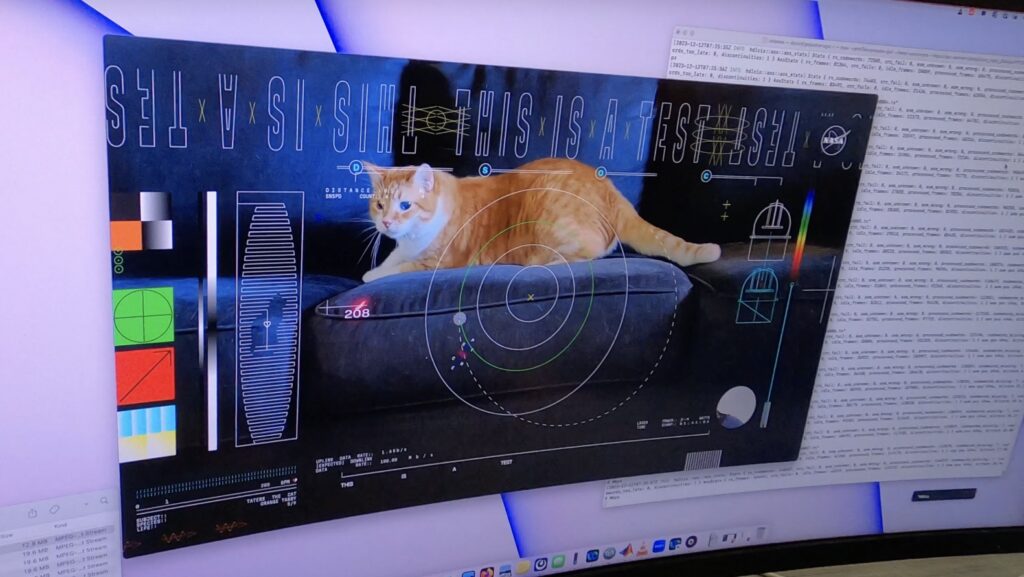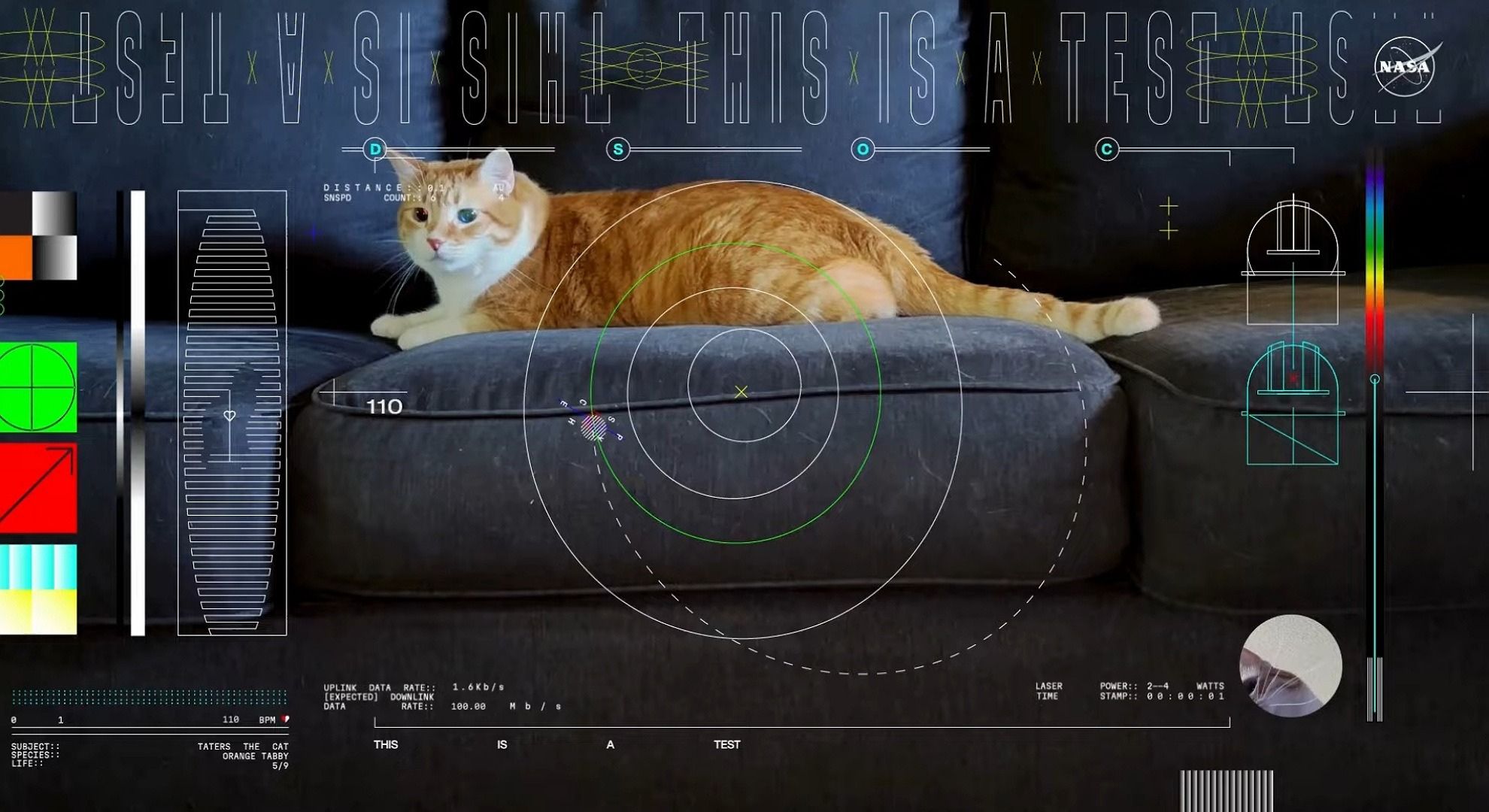On December 18, the National Aeronautics and Space Administration (NASA) reported the results of its Deep Space Optical Communications experiment, which took place on December 11. The experiment achieved a groundbreaking record by successfully streaming an ultra-high-definition video from a source 19 million miles away from Earth. This milestone was accomplished through NASA’s tech demo funded by the Technology Demonstration Missions (TDM) program, aiming to transmit high-bandwidth video and data from deep space—a crucial step for upcoming human missions beyond Earth’s orbit.
The ultra-high definition video records in vibrant colors, featuring an adorable orange cat named Taters, a pet of one of NASA’s employees, chasing a laser pointer on a sofa. Through a high-tech instrument called the flight laser transceiver, the demo was able to transmit a smooth 15-second test video. The video signal, sent at the system’s maximum bit rate of 267 megabits per second (Mbps), only took 101 seconds to reach Earth where it was streamed live at NASA’s Jet Propulsion Laboratory in Southern California.


There is also a historical link for conducting the broadcast transmission demo with Taters the cat; back in 1928, when television was in the experimental stages, the very first video image to ever be seen was a toy statue of the popular silent film cartoon character Felix the Cat mounted to a revolving phonograph turntable for engineers to test.
NASA’s Deputy Administrator Pam Melroy expressed the importance of this achievement, sharing, “This underscores our commitment to advancing optical communications as a key element to meeting our future data transmission needs. Increasing our bandwidth is essential to achieving our future exploration and science goals, and we look forward to the continued advancement of this technology and the transformation of how we communicate during future interplanetary missions.”
Launched alongside NASA’s Psyche mission on Oct. 13, the laser communications demo is intended to send data from deep space at rates surpassing current radio frequency systems by 10 to 100 times. As Psyche journeys to the asteroid belt between Mars and Jupiter, this tech demonstration will transmit high-data-rate signals, reaching the Red Planet’s farthest point from Earth. This advancement sets the stage for improved communications, enabling the transmission of intricate scientific data, high-definition imagery, and video to support humanity’s next major exploration.
Other POP! stories that you might like:
Snoozing on your alarm makes you mentally sharper, study claims
Aurora Borealis sighted in Japan for the first time in 2 decades
Golden mole species thought to be extinct rediscovered in South Africa after 86 Years
‘My loneliness is killing me’: Loneliness is as harmful as smoking 15 cigarettes a day, says study



